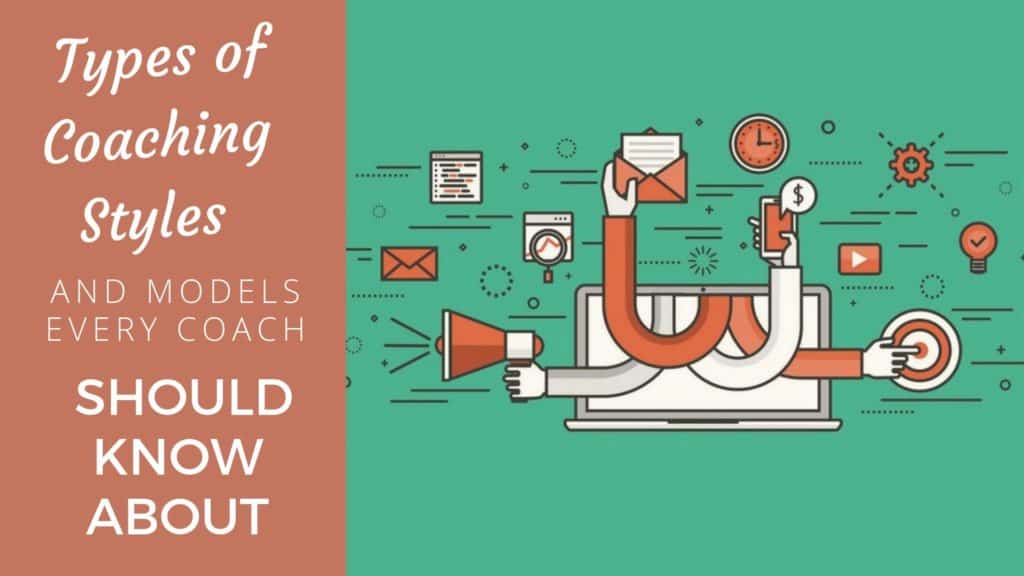Are you unsure which coaching style fits you best or how to make a real impact on your clients? In this article, I’ll guide you through different coaching styles, showing you how to enhance your practice and connect more effectively with those you help.
5 Types of Coaching Styles
- 🗳️ Democratic Coaching: Involves the coach and client working together to make decisions, emphasizing collaboration and shared responsibility.
- 🌿 Holistic Coaching: Focuses on the interconnectedness of various aspects of life, considering the whole person and their environment.
- 🎯 Autocratic Coaching: Features a coach who makes decisions and directs the client without much input or collaboration.
- 🔮 Vision Coaching: Centers on helping clients clarify and achieve their long-term goals, often by creating a clear vision of the future.
- 🕊️ Laissez-faire Coaching: Allows clients a high degree of autonomy and self-direction, with the coach providing minimal guidance or intervention.
What are Coaching Styles
Coaching styles are more than just methods—they’re the unique expressions of how you connect and guide your clients toward their goals. Every coach has an approach for the client that is unique; it is this approach that is the foundation of their coaching style. As you develop your own style, you’ll find it’s the key to genuinely impacting someone’s life.
5 Types of Coaching Styles
I have been coaching for more than 15 years and these are the 5 main styles that most coaches work with.
Democratic Coaching
Think of democratic coaching as a collaborative approach. Here, you and your client work together to set goals and decide the path forward. It’s all about mutual participation. You’ll find this style works best in environments where client engagement and input are valued, and where fostering a sense of ownership and responsibility in the client is essential.
Holistic Coaching
As a holistic coach, you look at the whole picture of your client’s life, not just specific goals. This style is beneficial for clients seeking balance and wellness across various aspects of their lives. It’s particularly effective when working with clients who value personal growth and well-being.
Autocratic Coaching
This style involves a more directive approach, where you, as the coach, make decisions and set the course. It’s useful in situations where clear guidance and structure are needed, such as with clients who prefer not to make decisions or in high-stakes environments where outcomes are critical.
A study by Leadership IQ surveyed 14,033 people to understand preferences for leadership styles. 21% people appreciate autocratic leaders who retain final decision-making authority.
Vision Coaching
Vision coaching is all about big-picture thinking. You help your clients set far-reaching goals and align their actions with their larger life vision. This style is great for visionary individuals or those looking to make significant changes or strides in their personal or professional lives.
Laissez-faire Coaching
Laissez-faire coaching is characterized by a hands-off approach, giving clients the freedom to explore and act on their own while you provide support as needed. This style can be particularly effective with highly motivated and independent clients who benefit from minimal interference.
Choosing the Right Coaching Style
Each of these factors I have explained below is something you, as a coach, need to consider carefully. This ensures that your coaching sessions are tailored to the specific needs of your clients. By doing so, you enhance the relevance and impact of your coaching, making each session more productive and meaningful.
- Client’s Goals: Tailoring your coaching style to your client’s specific objectives is crucial.
For example, if you’re working with an entrepreneur who aims to scale their business globally, vision coaching can be incredibly effective.
This style helps them set ambitious, long-range goals and align their daily operations with these broader business strategies, fostering clear direction and sustained motivation.
- Client’s Personality: The coaching style chosen should also resonate with the client’s personality.
One of my clients deeply valued introspection and personal discovery. So I opted for Holistic coaching as the suitable method of helping him as it integrates aspects of emotional health, lifestyle choices, and overall well-being, providing a supportive framework that addresses the whole person. - Coach’s Personality: Your coaching style should reflect your personality and strengths. I blend autocratic and vision coaching styles in my mastermind sessions, providing structured guidance while helping clients set ambitious, long-term goals.
I notice that this combination works well for me because it balances the need for decisive action with the inspiration and motivation needed to achieve significant, visionary goals. My clients benefit from the clarity and direction this style offers.
Advantages of Integrating Multiple Coaching Styles
You’ve likely heard the saying, “When all you have is a hammer, everything looks like a nail.” This concept rings true in coaching, as relying solely on one approach can be limiting.
Combining different coaching styles can greatly enhance the adaptability and effectiveness of your coaching. By using a hybrid approach, you can tailor your coaching to fit the dynamic needs of each client.
There’s no ‘one size fits all’ here. I never stick to just one coaching style; instead, I blend multiple approaches to meet the dynamic needs of each client
I once worked with a business coach, Samuel, who struggled to attract high-ticket clients. Upon evaluating his approach, it became evident that his coaching modules were overly complex, and his use of jargon created barriers in communication.
To tackle this, I combined holistic coaching to simplify his content, ensuring it was accessible and engaging. We also incorporated democratic coaching to involve Samuel in the redesign of his modules, fostering a sense of ownership and alignment with his client’s needs.
Lastly, through vision coaching, we refined his communication skills, emphasizing clarity and simplicity to better convey his expertise. This multi-faceted approach addressed the initial barriers and helped with fixing his client communication issues.
Conclusion
Now that you’re familiar with these diverse coaching styles, the key is to experiment and find the right balance. Don’t rely exclusively on one method, and be cautious not to mix too many at once, as this can dilute the effectiveness of your approach.
If you have any questions or need further clarification on implementing these strategies, feel free to leave them in the comments below.




ABOUT SAI BLACKBYRN
I’m Sai Blackbyrn, better known as “The Coach’s Mentor.” I help Coaches like you establish their business online. My system is simple: close more clients at higher fees. You can take advantage of technology, and use it as a catalyst to grow your coaching business in a matter of weeks; not months, not years. It’s easier than you think.
AS SEEN ON
0 Comment